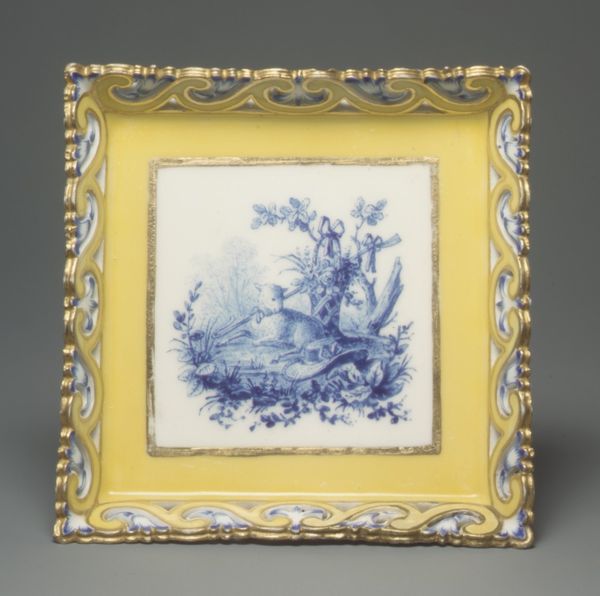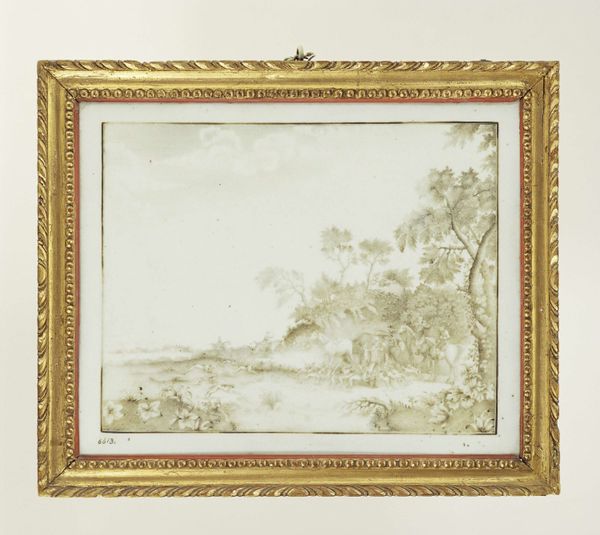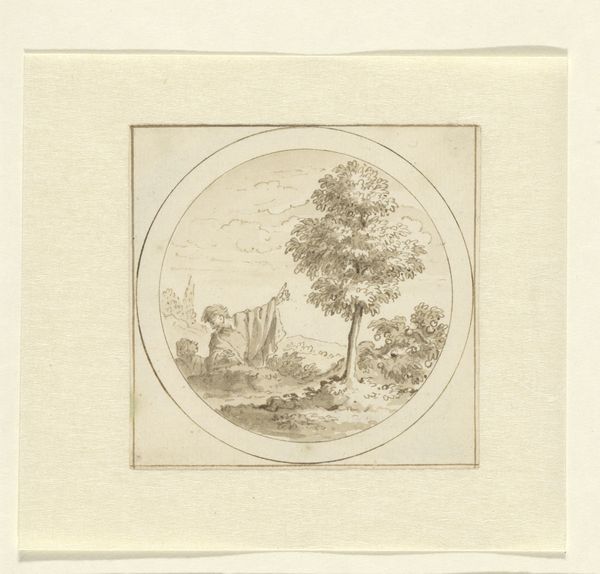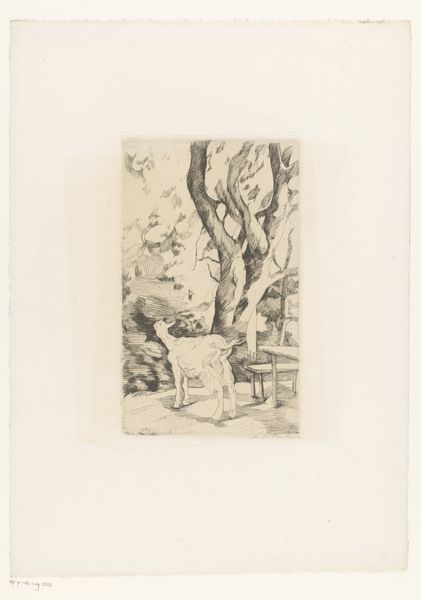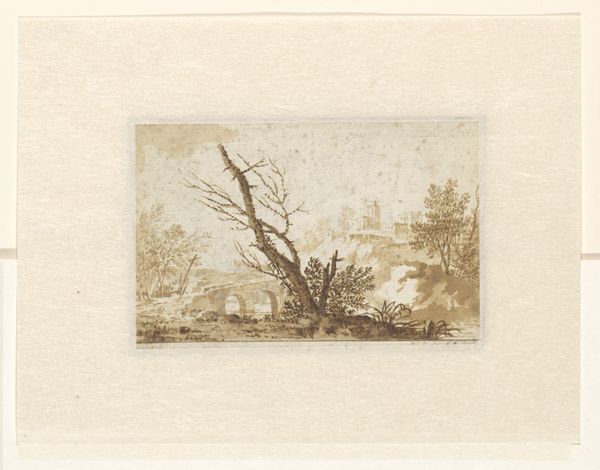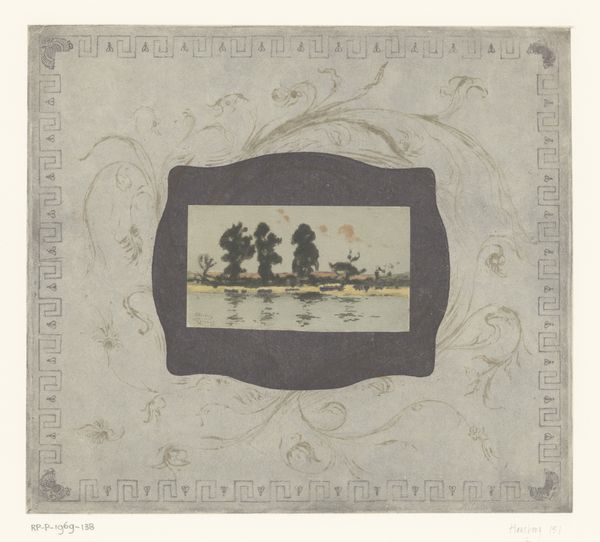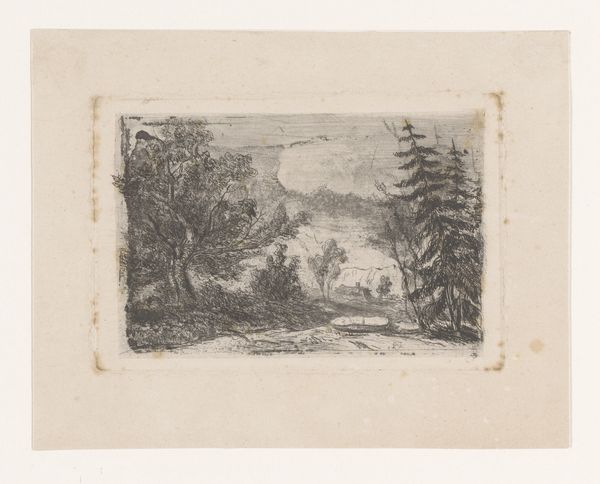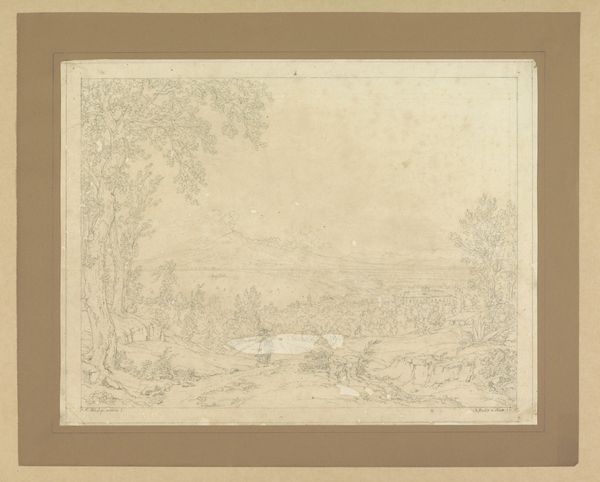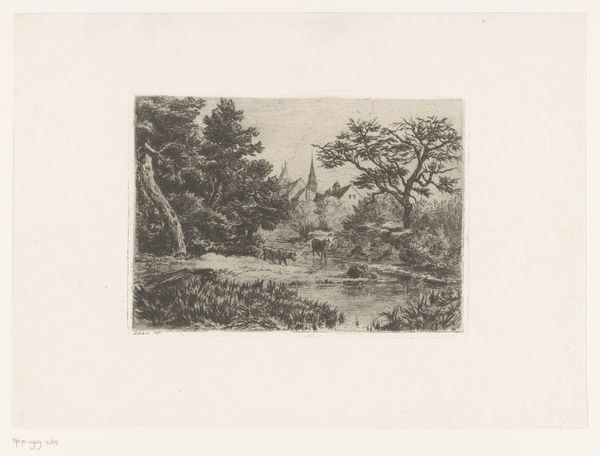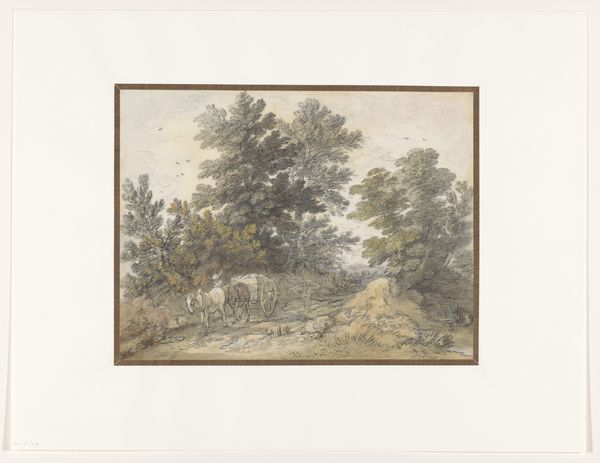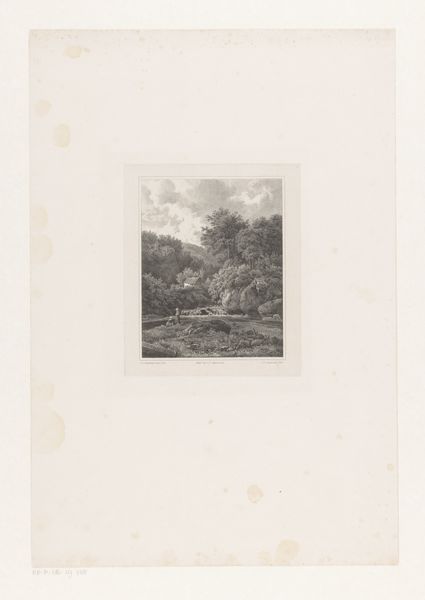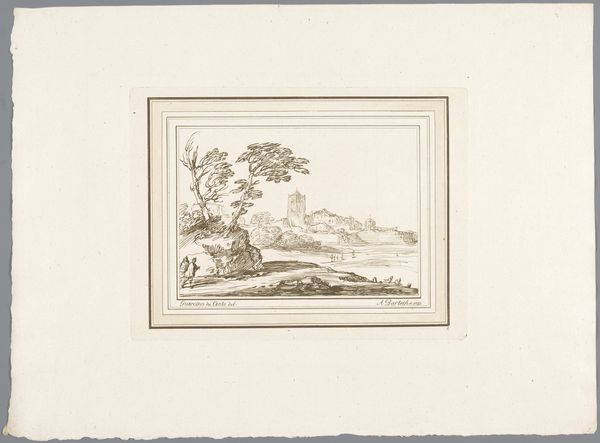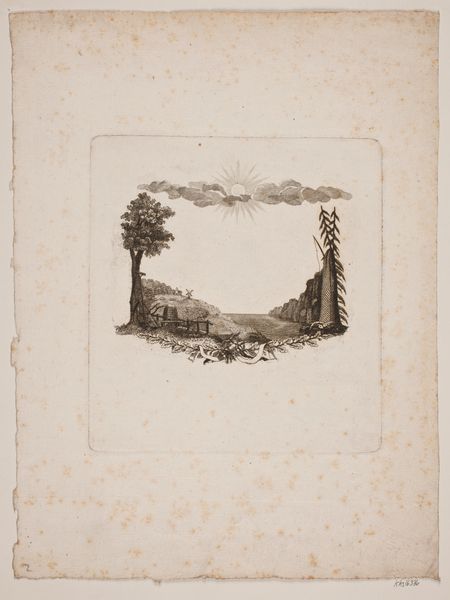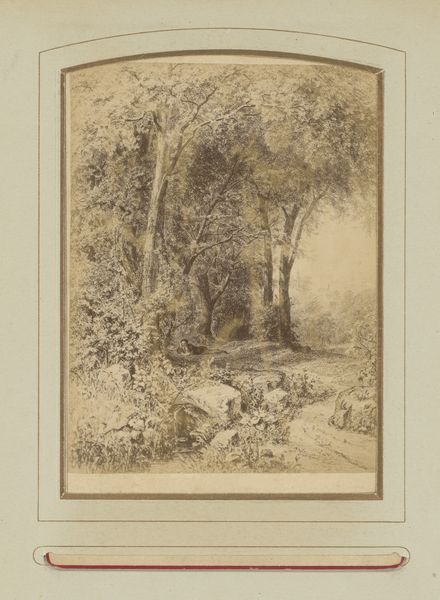
Koffiekop, beschilderd met een rivierlandschap met boerderijen en figuren before 1814
0:00
0:00
painting, porcelain, watercolor
#
neoclassicism
#
painting
#
landscape
#
porcelain
#
watercolor
#
genre-painting
#
decorative-art
Dimensions: height 5.6 cm, width 7.1 cm, depth 5.7
Copyright: Rijks Museum: Open Domain
Curator: Here we have a delicate porcelain object from before 1814, attributed to the Koninklijke Porseleinfabriek Dommer & Co. It’s a koffiekop – a coffee cup – adorned with a watercolor painting of a river landscape featuring farmhouses and figures. Editor: It’s precious, isn't it? Immediately evokes this quaint tranquility. Like holding a secret, tiny world in the palm of my hand, complete with the kind of bucolic calm I only ever experience in dreams. Curator: It's neoclassical in style, reflecting an interest in idealized rural life which manifested during a time of considerable upheaval. The landscape as genre painting situates this cup within a specific historical and economic context – who had access to such objects, and what narratives did they reinforce about class and land ownership? Editor: Right, the land-owning class sipping coffee while picturesque peasants populate their cups. I get it. Still, the soft watercolors offer this appealing distance, like viewing the world through gauze. Makes me want to escape—maybe to that little house by the water. Is that escapism a product of its time, or is it timeless? Curator: Perhaps both. We should consider the intended use of the object. The imagery, idyllic as it seems, could represent a coded visual language—perhaps invoking ideas of national identity and prosperity in a time of political instability. The act of drinking from this cup becomes performative, a daily enactment of one’s position within the social hierarchy. Editor: Hmmm, I was seeing it as more of a conversation starter—imagine showing this off to guests back then. Each swirl of the coffee would bring that tiny painting to life. I love how art can make the everyday a bit extraordinary, don’t you think? Curator: Absolutely. And objects like these are important markers within material culture, giving us tangible access to how individuals from centuries ago constructed their realities. They're powerful tools for social history, feminist theory and the deconstruction of power dynamics. Editor: Right, sipping social commentary, one dainty cup at a time. I might like my coffee black, but there's always room for a dash of context. Curator: Exactly. Examining even the most delicate of objects through multiple lenses allows us to excavate broader cultural meanings. Editor: Well, I’ll certainly look at my own morning mug a little differently now. It’s amazing what you can discover in the smallest of worlds.
Comments
No comments
Be the first to comment and join the conversation on the ultimate creative platform.
